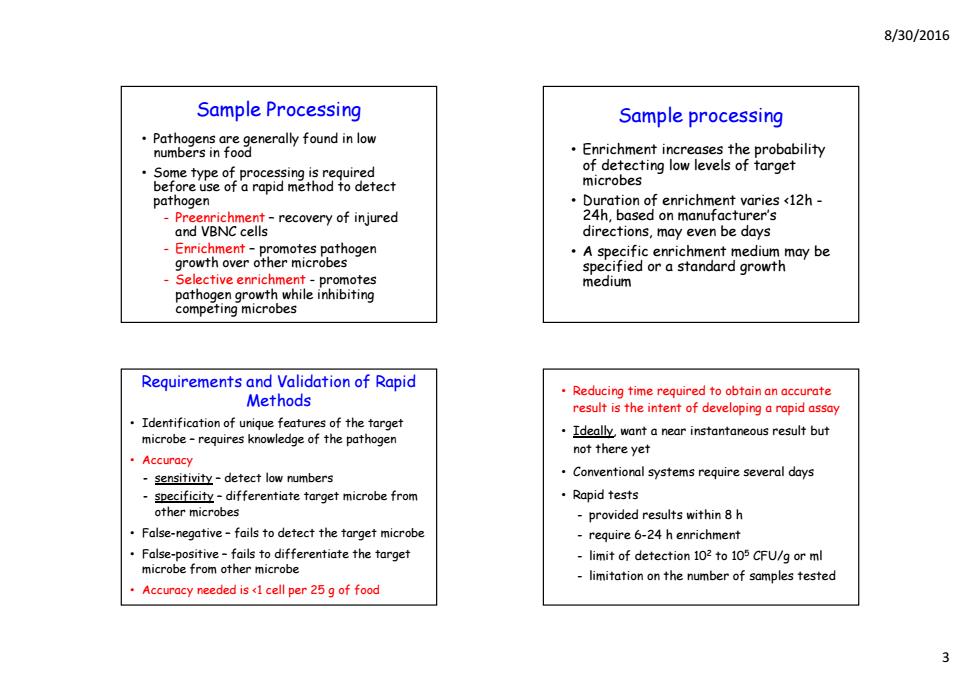正在加载图片...

8/30/2016 Sample Processing Sample processing Pathogens are generally found in low numbers in food Enrichment increases the probability Some type of processing is required of detecting low levels of target before use of a rapid method to detect microbes pathogen Duration of enrichment varies <12h- -Preenrichment-recovery of injured 24h,based on manufacturer's and VBNC cells directions,may even be days Enrichment-promotes pathogen A specific enrichment medium may be growth over other microbes specified or a standard growth Selective enrichment-promotes medium pathogen growth while inhibiting compefing microbes Requirements and Validation of Rapid Methods Reducing time required to obtain an accurate result is the intent of developing a rapid assay Identification of unique features of the target microbe-requires knowledge of the pathogen Ideally,want a near instantaneous result but not there yet ·Accuracy sensitivity-detect low numbers Conventional systems require several days specificity-differentiate target microbe from ·Rapid tests other microbes -provided results within 8 h False-negative-fails to detect the target microbe -require 6-24 h enrichment False-positive-fails to differentiate the target limit of detection 102 to 105 CFU/g or ml microbe from other microbe limitation on the number of samples tested Accuracy needed is <1 cell per 25 g of food8/30/2016 3 Sample Processing • Pathogens are generally found in low numbers in food • Some type of processing is required before use of a rapid method to detect pathogen - Preenrichment – recovery of injured and VBNC cells - E ih nr c hment – promotes h pat hogen growth over other microbes - Selective enrichment - promotes pathogen growth while inhibiting competing microbes Sample processing • Enrichment increases the probability of detecting low levels of target microbes • Duration of enrichment varies <12h - 24h, based on manufacturer’s directions, may even be days • A specific enrichment medium may be specified or a standard growth medium Requirements and Validation of Rapid Methods • Identification of unique features of the target microbe – requires knowledge of the pathogen • Accuracy - sensitivity – detect low numbers - specificity – differentiate target microbe from other microbes • False-negative – fails to detect the target microbe • False-positive – fails to differentiate the target microbe from other microbe • Accuracy needed is <1 cell per 25 g of food • Reducing time required to obtain an accurate result is the intent of developing a rapid assay • Ideally, want a near instantaneous result but not there yet • Conventional systems require several days • Rapid tests - provided results within 8 h - require 6-24 h enrichment - limit of detection 102 to 105 CFU/g or ml - limitation on the number of samples tested